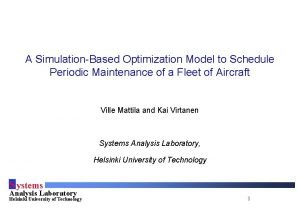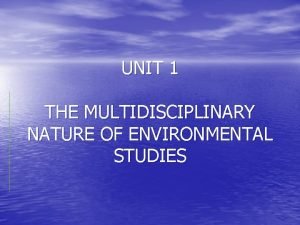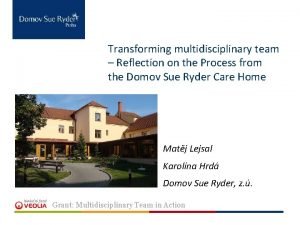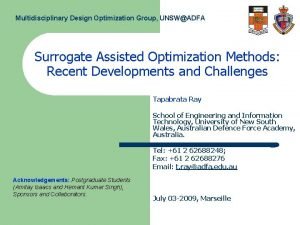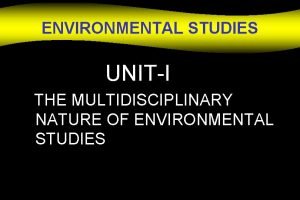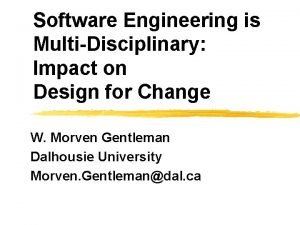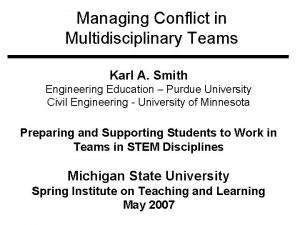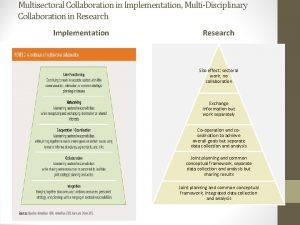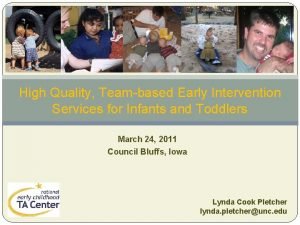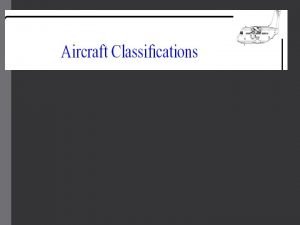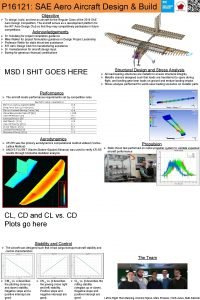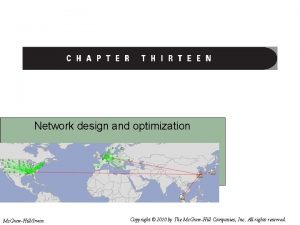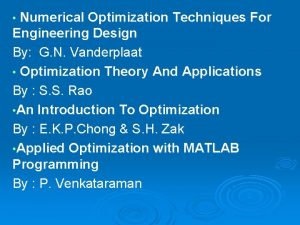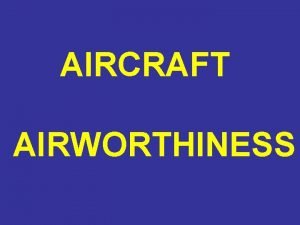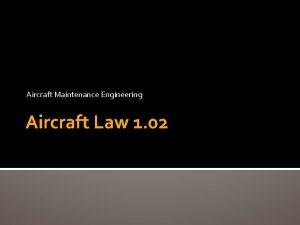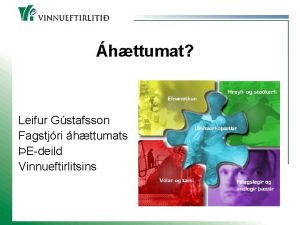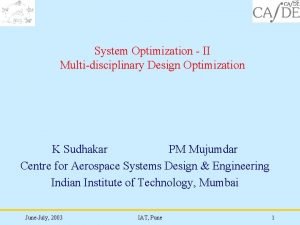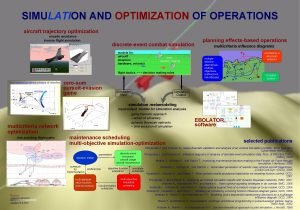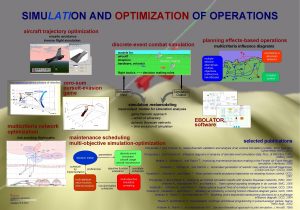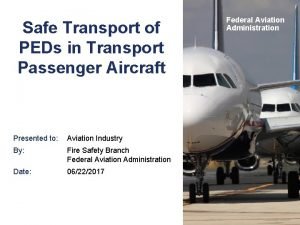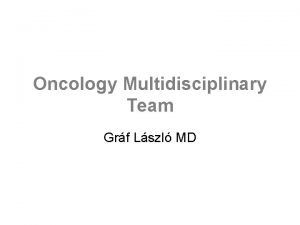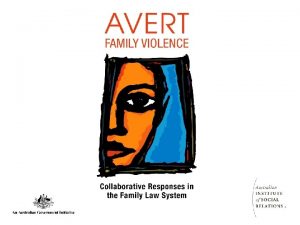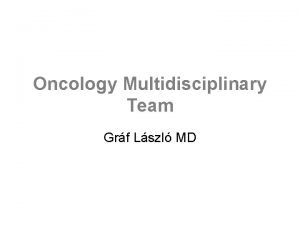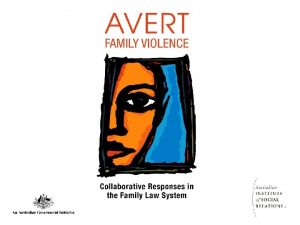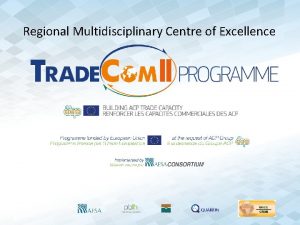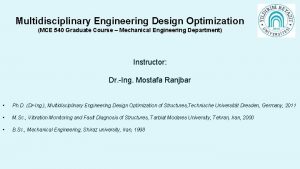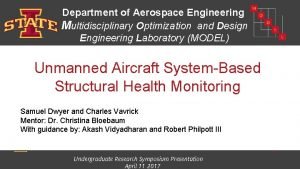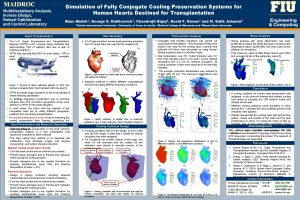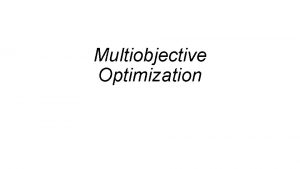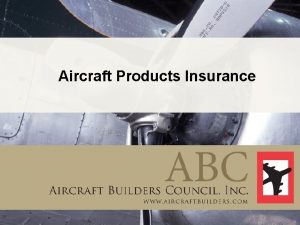Multidisciplinary Design Optimization of LowAirframeNoise Transport Aircraft Leifur
























- Slides: 24

Multidisciplinary Design Optimization of Low-Airframe-Noise Transport Aircraft Leifur Leifsson, William Mason, Joseph Schetz, and Bernard Grossman Virginia Tech and Raphael Haftka, University of Florida Work sponsored in part by NASA Langley Research Center Phoenix Integrations Inc. provided Model. Center software 44 th AIAA Aerospace Science Meeting and Exhibit, Reno January 9, 2006

Outline u Introduction u Research objectives u Methodology u MDO formulation u Design studies u Conclusions u Future work (Source: www. airliners. net) 2

Aircraft noise is a growing problem Approach Noise (EPNd. B) (Data from “Advisory Circular”, DOT, FAA, November 2001) u 100% increase in noise related restrictions in the last decade u NASA’s goal is to reduce noise by 20 decibels in next 20 years 3

Aircraft Noise Certification Thrust Cutback Threshold 120 m Lift-Off Flyover (394 ft) Approach 2, 000 m (1. 24 miles) Sideline Brake Release 450 m (0. 28 miles) 6, 500 m (4. 04 miles) u Aircraft must be certified by the FAA and ICAO in terms of noise levels u Certification noise is measured at flyover, sideline, and approach u Based on aircraft max TOGW and number of engines, the noise level is limited u Additionally, regulations limit the hours and the number of operations 4

Research Objectives u Include aircraft noise in the conceptual design phase u Design low-airframe-noise transport aircraft using MDO u Quantify change in performance w. r. t. traditionally designed aircraft Airframe Noise Sources 5

Design Methodology: Noise as a Design Constraint Optimize aircraft without considering aircraft noise Reference configuration Aircraft noise analysis of reference configuration Reference noise level, Add a noise constraint Re-optimize the reference configuration for a target noise reduction New configuration with less noise 6

MDO Framework Model. Center Optimizer Aircraft Analysis u Noise Analysis Aircraft analysis codes previously developed at Virginia Tech – High-lift system analysis module was added u ANOPP used for aircraft noise analysis u Model. Center used to integrate the codes u DOT is the optimizer; Method of Feasible Directions optimization algorithm 7

ANOPP Overview u Semi-empirical code u Uses publicly available noise prediction schemes u Continuously updated by NASA u The airframe noise module is component based u Based on airframe noise models by Fink u The general approach: Far-Field Mean Square Acoustic Pressure Acoustic Power 8

ANOPP – Acoustic Power of Each Component u Wing Trailing-Edge (Clean wing) Turbulent BL thickness u Leading-Edge Slat – Increment on wing TE noise – TE noise of LE slat u Trailing-Edge Flap u Landing-Gear 9

MDO Formulation u Objective function – Min Takeoff Gross Weight u Design variables (17 -22) – Geometry – Average Cruise Altitude – Sea level static thrust – Fuel weight u Constraints (16 -17) – Geometry – Performance • Takeoff, Climb, Cruise, Landing u Parameters – Fuselage geometry 10

High-Lift System Configuration Planform View Section View b/ 2 c bs / 2 Slat (Es) cr V Flap (Ef) cb b Aileron (Ea) ct d/ 2 x bf / 2 c’ s f ba / 2 u High-lift analysis model based on semi-empirical methods by Torenbeek u Model validated by analyzing a DC-9 -30 and comparing with published data 11

High-Lift Design Limits and Requirements CL CL maxlimit CLmax CL f 0 s 0 app stall app limit = ts - gs FAA Design Requirement: 12

MDO Formulation for the High-Lift System MDO DV’s: Constraints: Flap Deflection: Side Constraint: Parameters: Limited by ANOPP 13

Design Studies 1. Approach speed study 2. TE flap noise reduction 3. Airframe noise analysis of cantilever wing vs. SBW Cruise - Climb Reserve = 500 nm Climb Warmup Taxi Takeoff Mach = 0. 85 Range = 7, 730 nm Payload = 305 pax Descent Landing 14

Study 1: Approach Speed Study 15

Reducing airframe noise by reducing approach speed alone, will not provide significant noise reduction without a large weight penalty +714 sqft (+14. 3%) TOGW (lb) Sref +14, 240 lb (+2. 4%) Sref (sqft) TOGW Approach Speed (knots) Total Airframe Noise -1. 75 EPNd. B LE Slat Noise (EPNd. B) TE Flap Main Landing Gear Nose Landing Gear Clean Wing Approach Speed (knots) 16

Study 2: TE flap noise reduction 17

Eliminate TE flaps by increasing Sref and without incurring significant weight penalty Sflap +5. 2 deg (sqft) (deg) f = 30 deg Sflap 85. 6 TE Flap Noise Reduction (EPNd. B) TOGW +15. 2% Sref (lb) TOGW (sqft) +1, 900 lb 85. 6 TE Flap Noise Reduction (EPNd. B) 18

Thus, eliminating any noise associated with TE flaps Total Airframe Noise (EPNd. B) LE Slat Nose Landing Gear Main Landing Gear TE Flap Clean Wing TE Flap Noise Reduction (EPNd. B) 0 5. 07 9. 58 No TE Flap 19

Study 3: Airframe noise analysis of cantilever wing and SBW 20

SBW shows a significant improvement in weight & performance compared to a cantilever wing 21

SBW has a similar or potentially lower total airframe noise than a cantilever wing aircraft u Main landing gear – Cantilever with 6 wheels; SBW with 4 wheels and ½ the strut length u Wing strut modeled as wing TE noise 22

Conclusions u A methodology for designing low-airframe-noise aircraft has been developed and implemented in an MDO framework u Reducing airframe noise by reducing approach speed alone, will not provide significant noise reduction without a large weight penalty u Therefore, more dramatic changes to the aircraft design are needed to achieve a significant airframe noise reduction u Cantilever wing aircraft can be designed with minimal TE flaps without significant penalty in weight and performance u If slat noise and landing gear noise sources were reduced (this is being pursued), the elimination of the flap will be very significant u Clean wing noise is the next ‘noise barrier’ u SBW aircraft could have a similar or potentially lower total airframe noise compared to cantilever wing aircraft 23

Future Work u Important topics – Effects of reduced runway length – Effects on other noise sources • Increased drag at approach => Increased engine noise for same speed u SBW’s and BWB’s should be considered in future studies – Clean wing noise model by Hosder et al. 24
 Aircraft maintenance schedule optimization
Aircraft maintenance schedule optimization Multidisciplinary nature of environmental studies
Multidisciplinary nature of environmental studies Multidisciplinary team pros and cons
Multidisciplinary team pros and cons Temasek laboratories
Temasek laboratories Multidisciplinary vs interdisciplinary
Multidisciplinary vs interdisciplinary Multidisciplinary interdisciplinary and transdisciplinary
Multidisciplinary interdisciplinary and transdisciplinary Multidisciplinary nature of environmental studies ppt
Multidisciplinary nature of environmental studies ppt Multidisciplinary software development team
Multidisciplinary software development team Conflict in multidisciplinary teams
Conflict in multidisciplinary teams Multisectoral and multidisciplinary
Multisectoral and multidisciplinary Interdisciplinary multidisciplinary transdisciplinary
Interdisciplinary multidisciplinary transdisciplinary Multidisciplinary studies epcc
Multidisciplinary studies epcc Uniport symport antiport
Uniport symport antiport Primary vs secondary active transport
Primary vs secondary active transport Now answer the questions
Now answer the questions Active transport vs passive transport venn diagram
Active transport vs passive transport venn diagram Endocytosis vs exocytosis
Endocytosis vs exocytosis Primary active transport vs secondary active transport
Primary active transport vs secondary active transport Bioflix activity membrane transport active transport
Bioflix activity membrane transport active transport Active transport and passive transport
Active transport and passive transport Isotonic in biology
Isotonic in biology Aircraft group classification
Aircraft group classification Aircraft design and build
Aircraft design and build Network design and optimization
Network design and optimization Numerical optimization techniques for engineering design
Numerical optimization techniques for engineering design
